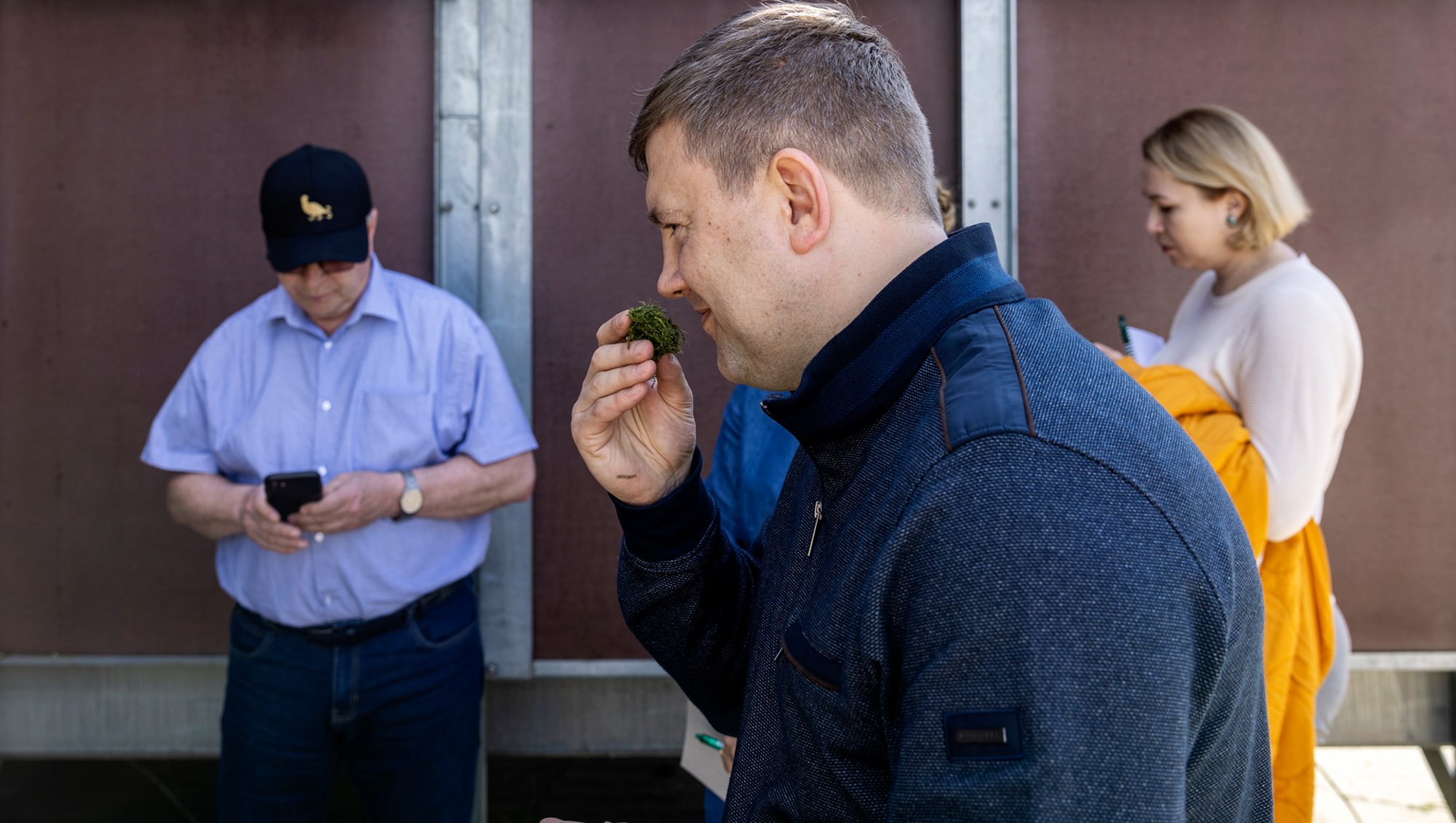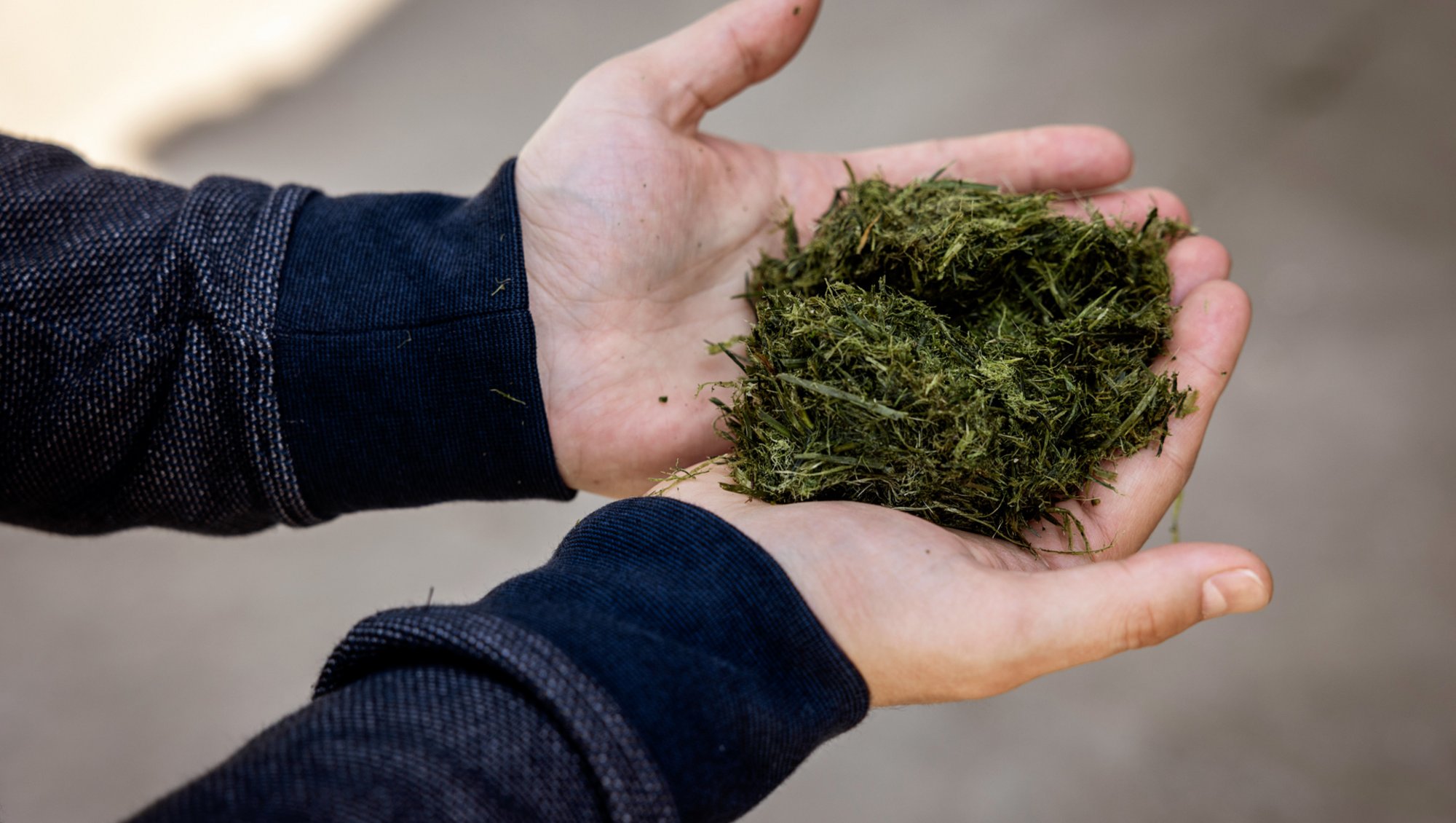Danish Technology Could Make a Huge Difference in the Reconstruction of Ukraine
On Monday, Ukraine's Minister of Agrarian Policy and Food visited Aarhus University's research facilities near Viborg to see a unique technology: a biorefinery that transforms grass into feed, fibers, food, and fuel.
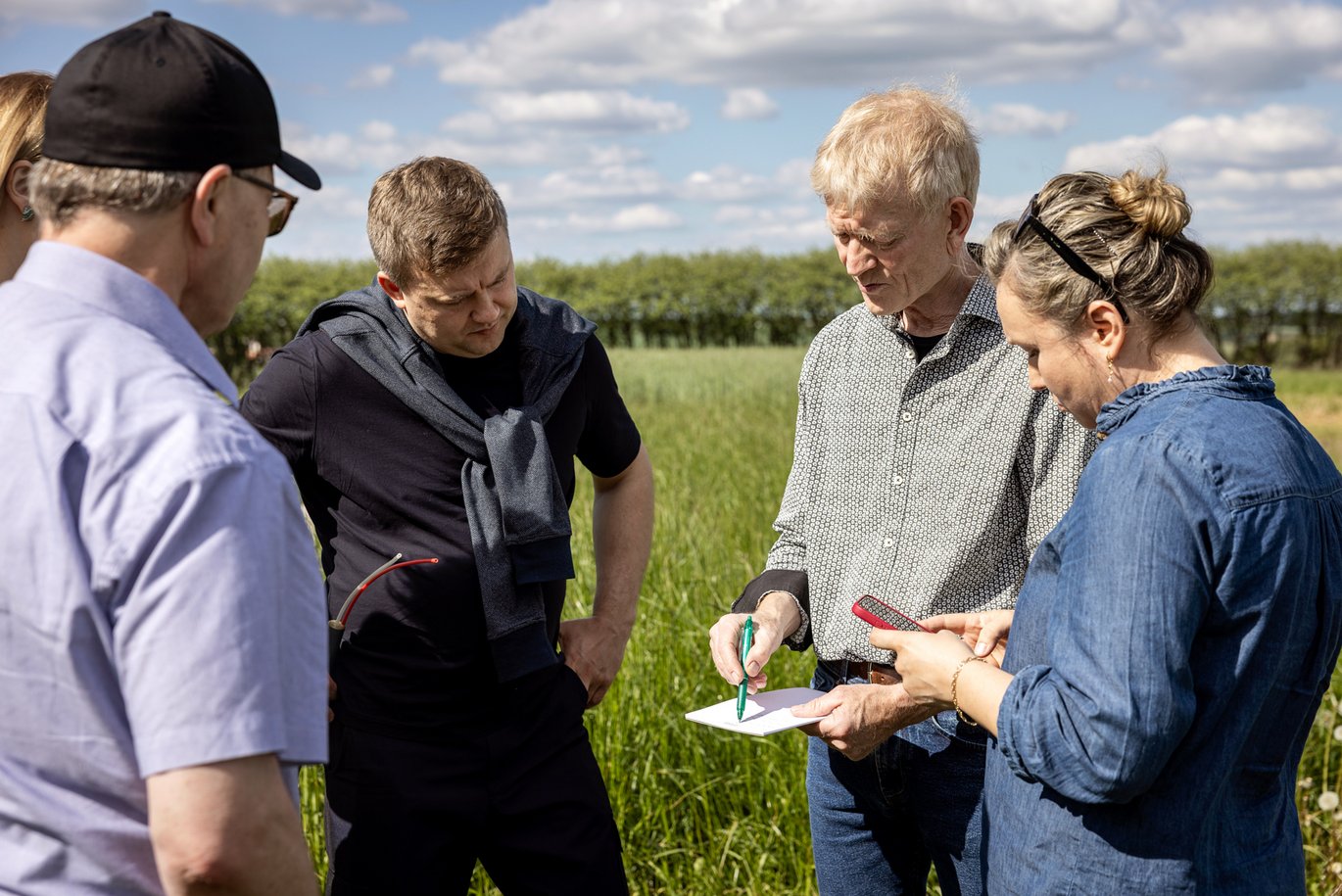
A black minibus crunches to a halt on the gravel in front of the main entrance to Aarhus University's research facilities just outside Viborg. From the seat next to the driver, a man energetically jumps out. He smiles broadly and immediately extends his hand.
His name is Vitali Koval, and he's not just "anyone". Last year, he was appointed Minister of Agrarian Policy and Food in Ukraine – an important and powerful position in a country where agriculture is a huge part of the economy.
Ukraine is one of the largest agricultural countries in the world. Or, at least, it was before Russia's invasion in 2022.
Since the war began, the country's agricultural sector has lost an estimated $80 billion. That’s at least what Vitali Koval assessed in February at a World Bank meeting.
This massive sum isn't just due to damage to farms, fields, and equipment from the war, but also from logistical challenges in transporting goods, rising prices of fertilizer and fuel, and the high costs of clearing mines from fields.
Around two million hectares of land in Ukraine have been mined. Currently, just under a quarter of this area has been cleared. This means that war's costs for agriculture are still rising.
At the same time, agriculture is largely sustaining the war effort, Vitali Koval explains as conversation flows in the minibus on the way to see the first experimental field. 60 percent of the country's exports come from the agricultural sector, and agriculture accounts for 20 percent of Ukraine's total gross national product.
- The reconstruction of the agricultural sector must begin immediately. Especially near the warzones, farms and fields are completely destroyed. We need to rebuild – not as it was before, but with new technology and new methods. That's why I've come here, to learn and be inspired, he says.
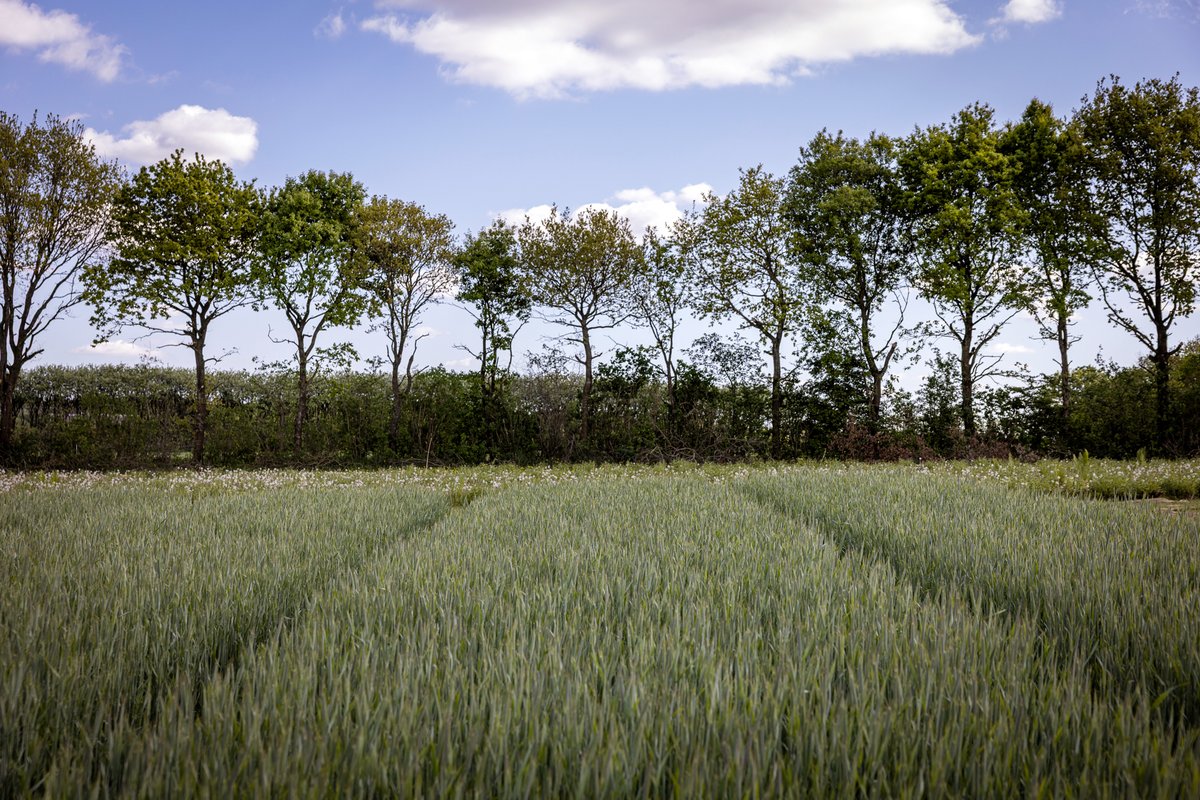
When it comes to rebuilding the agricultural sector in Ukraine, Danish research and technology might be very helpful, Brian Vinter, Vice-Dean for Research at the Faculty of Technical Sciences, explains.
- Vitali Kovals visit will hopefully help push Ukrainian agriculture in a new direction. Because large parts of their agriculture need to be re-established, I hope we can inspire them to look at new crops and cultivation methods that make Ukrainian agriculture more resilient going forward. And I hope the visit will kickstart their innovative agricultural future.
He continues, "All Danes want to help Ukraine. Here, we have something that actually helps directly. It's a great pleasure to be able to do so. At the same time, Ukraine wants to be part of the EU in a few years. By helping make their agriculture greener and more sustainable, we can hopefully push them closer to that goal.
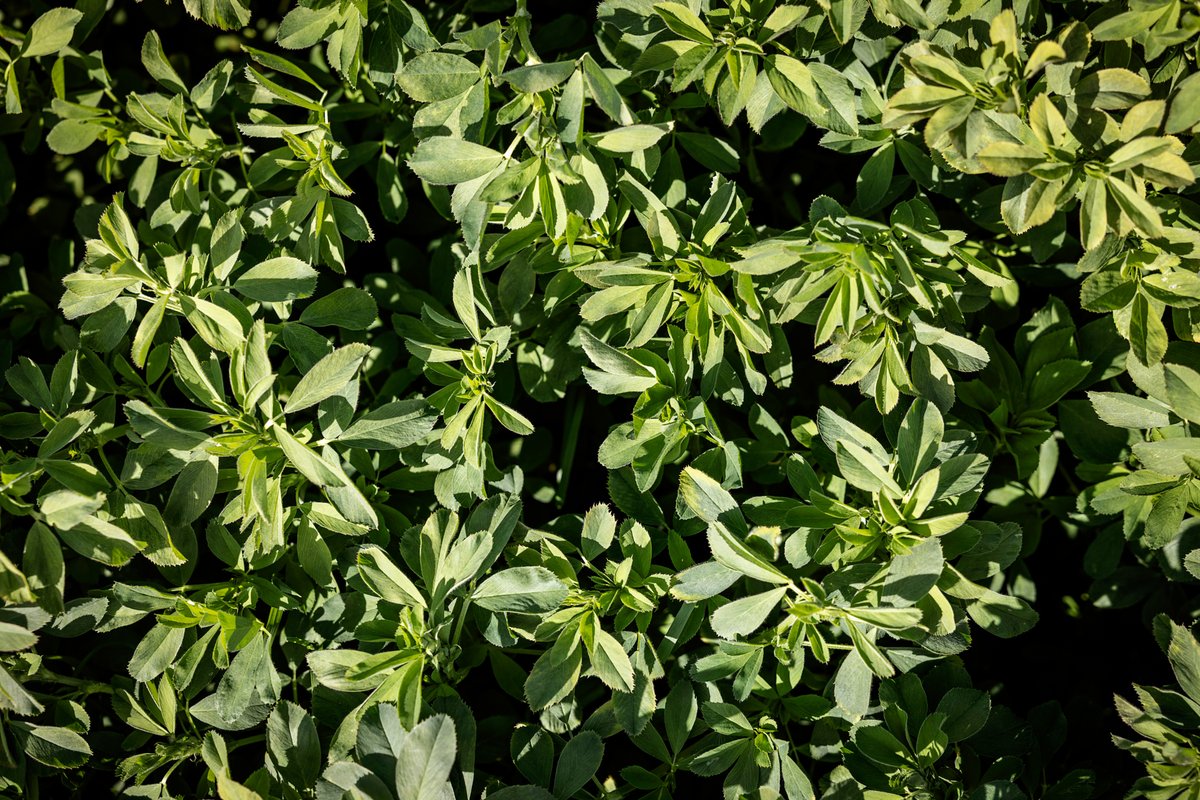
A Four-Leaf Clover in the Field
The sky above the experimental field is deep blue, and were it not for scattered clouds, it would feel infinite. Vitali Koval stands in the grass field in his dark blue attire, listening.
He’s not wearing a suit, as most Danish ministers on official duty probably would. Instead, he's dressed in a pullover with a militaristic cut and a pair of trousers made of sturdy canvas. Practical clothing that reflects the reality his country is facing.
With grayish-blue eyes, he listens intently as Professor Uffe Jørgensen, from the Department of Agroecology, explains the experiments his team is currently conducting in the fields.
The team of researchers and technicians works daily to cultivate and optimize the yield from various species and varieties of grass, clover, and perennial herbs. Unlike grain, clover-grass grows in the field throughout the whole season—and it's unnecessary to plow the field in the spring. This offers a number of advantages, explains Professor Uffe Jørgensen.
- In Denmark, we use a large part of our arable land to grow feed for animals and food for humans. These crops require us to plow the fields every year, which releases large amounts of CO2. If we replace barley and wheat with clover-grass, which grows all year round and doesn't require plowing, we will not only bind more CO2 in the plants and soil but also be able to produce feed, food, and materials to replace plastic.
- Our results show that we can double the yield and halve nitrate leaching. We are able to do this because grasslands stay green all year, and we harvest three to four times in one season. At the same time, it makes us independent of importing soy from South America. But it requires us to be able to convert the grass into useful products.
Clover-grass has, until now, not been a particularly important crop for Danish agriculture as it’s only usable as feed for ruminant animals, such as cows. Pigs and chickens cannot digest the grass fibers in their stomachs—unless the protein is extracted from the grass beforehand.
And this is precisely what the researchers at AU Viborg have succeeded in doing. They have developed technologies to press protein out of the grass. Proteins that can be used for a wide range of purposes.
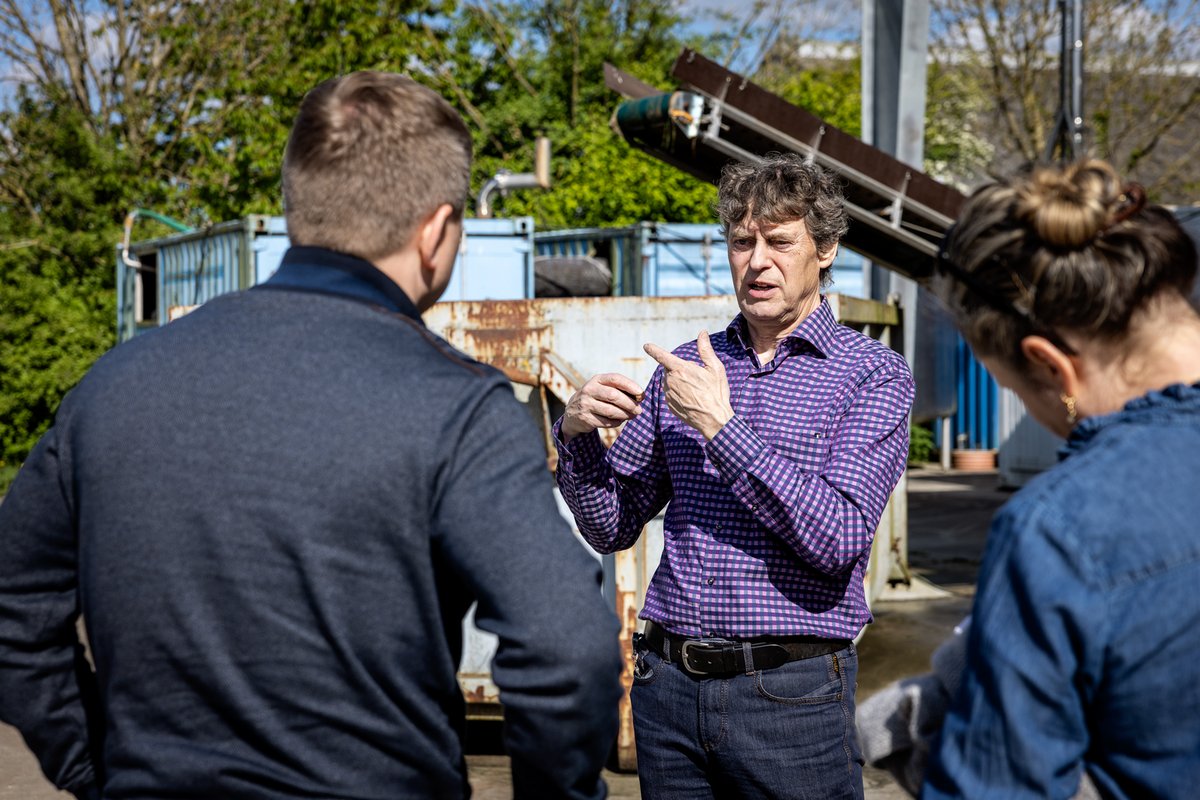
The Air is Thick with Grass
At the end of a long red-brick building is an enormous silver-colored machine, protected from wind and weather by a lean-to. The machine looks like something the Danish cartoonist, Storm P., could have drawn: a jumble of conveyor belts, containers, hoses, cables, and a huge press squeezing all liquid out of the grass.
Vitali Koval stands in front of the machine, smelling a ball of grass spit out by the machinery. The grass is dark green, dry, and smells strongly of freshly mown lawn – a thick, sweet scent that lingers in the air.
He feels the soft grass, then looks up, curiously observing the machine.
- How many years will it take before this technology is ready?, he asks.
Senior Researcher Steen Henrik Møller, from the Department of Animal and Veterinary Sciences, who serves as guide for the day, answers promptly.
"Well, it already is. We have two commercial plants in Denmark – and more are on the way."
The machine is a biorefinery. It's part of a test facility that researchers use for experiments. Experiments on how to convert grass from the experimental fields into a range of different products, explains Morten Ambye-Jensen, Associate Professor at the Department of Biological and Chemical Engineering at Aarhus University, who is responsible for the experimental facility.
- When we put grass into the machine, we extract protein that we can add to the pig and chicken feed, replacing the need for soybeans. This has already been a possibility for some years.
- The problem is that it's not yet profitable, as imported soybeans are still a bit cheaper. Therefore, we are working on both optimizing the process itself and increasing the value of the by-products from the process.
Three Things at Once
A series of pipes from the large machine lead through the wall and into the red-brick building. Inside, a series of large tanks hum. The sweet smell of grass is overwhelming.
Vitali Koval has to shout his question to be heard over the noise of the machines.
- Do you have companies that buys these fibers?
He stands with his fingers in a plastic box filled with dry, light-green fibers. Fibers, that have been extracted from the grass after it was drained of protein. Essentially a waste product. But a waste product with great potential.
- Not yet, is the answer. - But we are close to cracking the code, replies Professor Uffe Jørgensen.
Together with Morten Ambye-Jensen, he is working to develop new technology to utilize the grass's by-products. A series of advancements are necessary to make biorefineries like this one a good business. Currently, they can only compete with imported soy when it's organic, explains Morten Ambye-Jensen.
- When we extract protein from grass, there are two types of waste created, which we also call side streams. One is called press cake, the other brown juice. Normally, both side streams are put into a biogas plant to produce bioenergy. However, we are fully engaged in developing methods and linking technologies to convert these side streams into building materials, packaging, and textiles, as well as food for humans.
- If we succeed, these types of products will be much more valuable than biogas. It will suddenly make it advantageous to grow grass when you have biorefineries that can refine it into a wide range of valuable products. And we are very close. Development is moving quickly, and there are several pilot and demonstration plants working on optimizing these biorefining technologies.
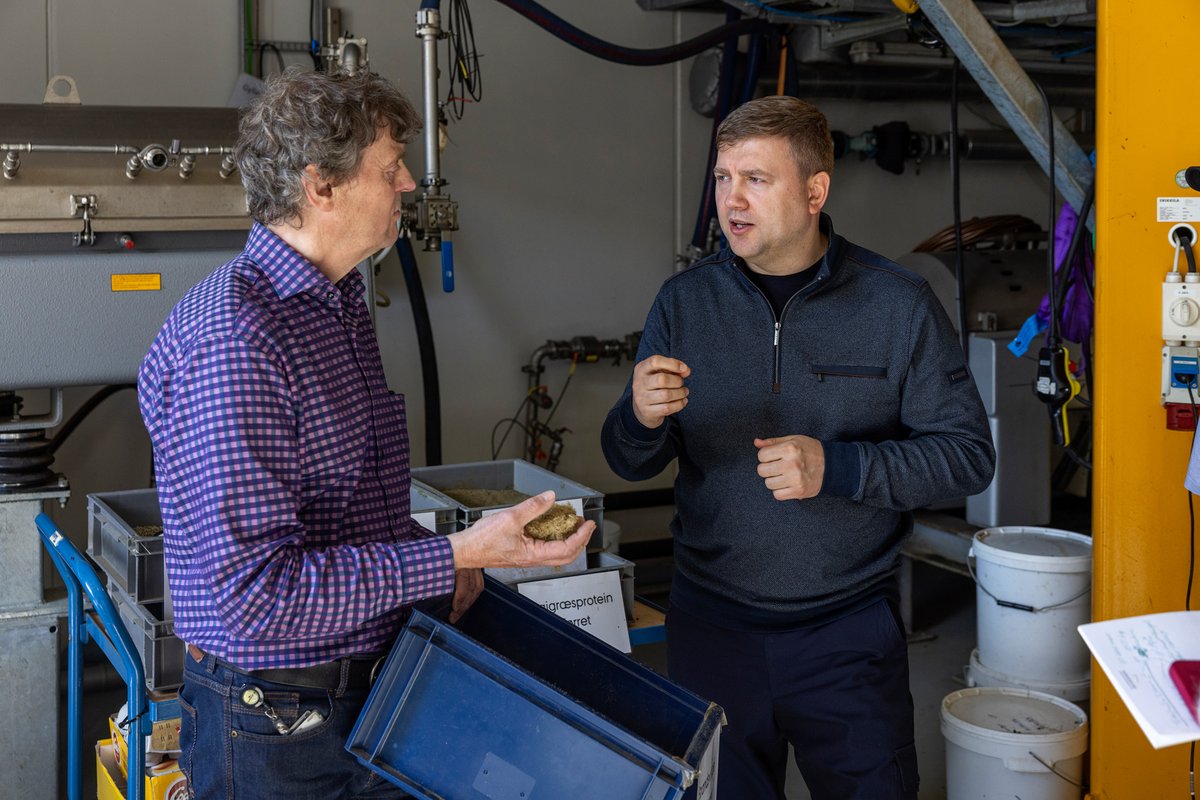
From Grass to Gold
Ukraine is one of the world's largest producers of both grain and sunflower oil. Before the war, the country accounted for 30 percent of the world's entire sunflower production.
More than 55 percent of the country is arable land, and as the country is the second-largest on the continent after Russia, there are enormous areas of agricultural land.
When Ukraine is rebuilt after the war, it will require enormous investments, and here, grass and new technologies may come to play an important role, Morten Ambye-Jensen believes.
- Clover-grass is easy to establish, produces high yields, and is more environmentally friendly than grain and other annual crops. Therefore, I think it is particularly relevant for Ukraine.
- Furthermore, it will be efficient and cheap to start production; it is perennial, so you don't have to buy seeds every spring, pesticides can be completely eliminated – and it requires less fertilizer when there is clover in it.
Vice-Dean Brian Vinter shares this assessment.
Because grass can be made into not only feed and food but also materials and energy, it will make Ukraine more self-sufficient – and thus less dependent on, for example, Russian gas.
In other words, Ukraine will become more resilient, explains Vice-Dean Brian Vinter.
- Ukraine will truly be able to make a difference because of its size. They have enough land to become self-sufficient in 'food, feed, and energy.' This will strengthen their resilience, and they will become less dependent on Russian gas and artificial fertilizers. Instead, they will produce valuable products that they can sell into Europe, he says.
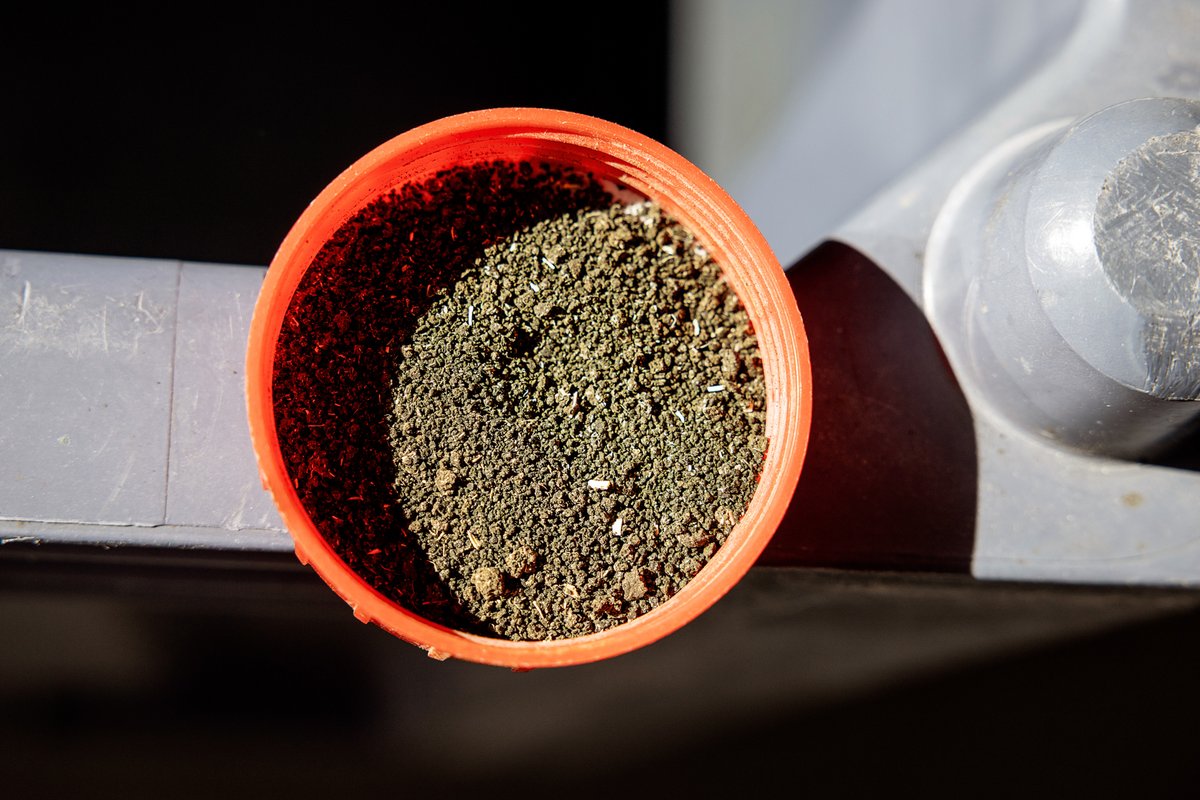
The Russian Legacy
Before the Berlin Wall fell, Ukraine was enormously important to the Soviet Union. The country supplied food to a large part of the 285 million people who were part of the Eastern Bloc.
Much of the Eastern Bloc's scientific research in agriculture and food took place at large research facilities in Ukraine. For example, the Soviet Institute of Plant Breeding and Genetics was located in Odesa on the Black Sea.
But when the Eastern Bloc collapsed, Russia moved a large number of research talents and research facilities to Moscow. Ukraine was left with an amputated agricultural research infrastructure, and it has not been possible to rebuild an equally strong research environment, says Vitali Koval.
- Our current model doesn't work very well. Research and industry are separated and don't communicate. We need to build a strong and collaborative research environment that can solve some of our major challenges in agriculture.
- Just like you do here in Denmark, he says, gesturing around.
Shortly after, the Ukrainian delegation climbs into the black minibus. Before the doors are closed, they exchange business cards with Professor Uffe Jørgensen. The minister also takes down a number of names of Ukrainian researchers on a notepad.
- If we are to cooperate, they would be a good place to start," he says and closes the door. With a wave and a smile, they continue on their tour of Denmark.

